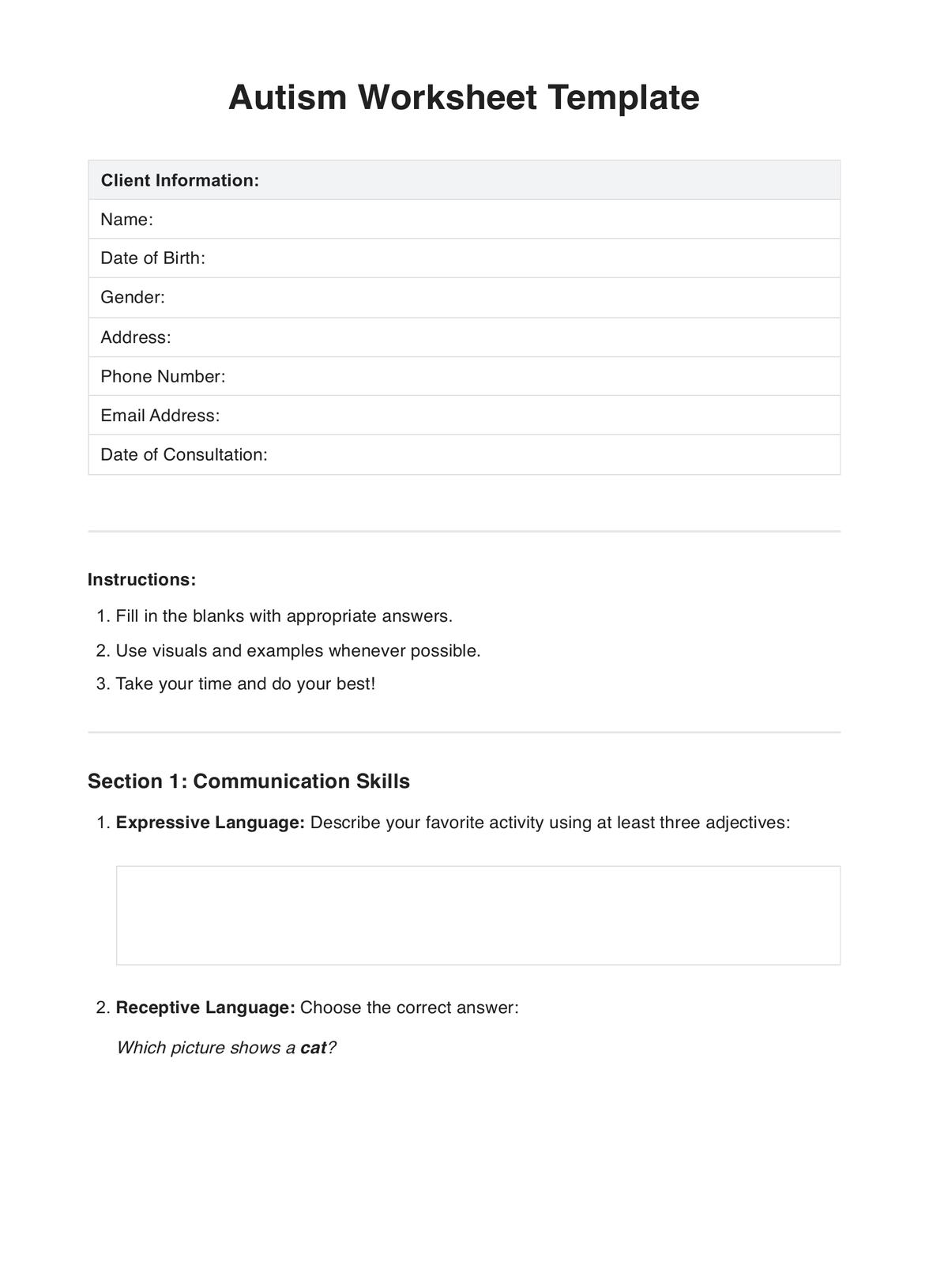Math worksheets, tracing sheets, and activities involving matching and language skills are beneficial for students with autism.

Autism Worksheets
Discover engaging and educational Autism Worksheets for effective learning and development. Improve skills and promote inclusion. Boost progress now!
Use Template
Autism Worksheets Template
Commonly asked questions
An effective organizational strategy is to keep worksheets sorted by type (matching, rhyming, sorting, etc.) or by theme/unit in binders.
Positive strategies when using Autism Worksheets include visual support, video modeling, prompting, reinforcement, and time delay.
EHR and practice management software
Get started for free
*No credit card required
Free
$0/usd
Unlimited clients
Telehealth
1GB of storage
Client portal text
Automated billing and online payments











